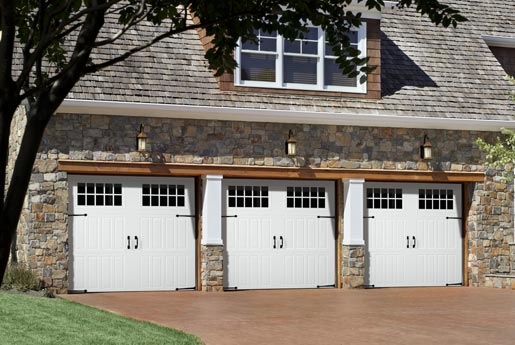Garage Door Repair Fort Worth TX are a vital part of a home’s exterior, providing security, functionality, and aesthetic appeal. However, over time, garage doors may develop rust, compromising their appearance and structural integrity.

Dealing with rust on garage doors requires understanding the causes, assessing the extent of damage, and implementing appropriate solutions. In this comprehensive guide, we’ll explore the factors influencing the cost of addressing rust on garage doors, provide insights into different treatment options, and offer valuable tips for homeowners looking to restore their garage doors to their former glory.
Understanding Rust on Garage Doors
Rust on garage doors is typically caused by exposure to moisture and oxygen, which triggers a chemical reaction known as oxidation. Common causes of rust include:
- Exposure to Weather Elements: Garage doors are constantly exposed to the elements, including rain, snow, and humidity. Over time, moisture can penetrate the surface of the door, leading to rust formation.
- Lack of Maintenance: Neglecting regular cleaning and maintenance of garage doors can accelerate rust formation. Dirt, debris, and other contaminants can accumulate on the surface, creating an ideal environment for rust to develop.
- Poor Quality Materials: Garage doors made from low-quality materials or lacking proper protective coatings are more susceptible to rust. Investing in high-quality, rust-resistant materials can help prevent rust formation.
Factors Influencing Rust Treatment Costs
Several factors influence the cost of addressing rust on garage doors, including:
- Extent of Rust Damage: The severity of rust damage determines the complexity and cost of treatment. Surface-level rust may be easier and less expensive to address, while extensive corrosion requiring replacement of door panels or components can be more costly.
- Type of Garage Door: Different types of garage doors, such as steel, aluminum, or wood, require specific treatment methods. The material composition of the door influences the selection of rust treatment products and techniques, which can affect overall costs.
- Professional Services: Hiring a professional garage door technician for rust treatment incurs labor costs, which can vary depending on factors such as location, expertise, and scope of work. DIY rust treatment may be more cost-effective but requires time, effort, and specialized tools.
Treatment Options for Rusty Garage Doors
Several treatment options are available for addressing rust on garage doors, including:
- Surface Cleaning and Sanding: Surface-level rust can often be removed using sandpaper or a wire brush, followed by thorough cleaning to remove debris and oxidation. This method is relatively inexpensive but may not be effective for extensive rust damage.
- Chemical Rust Converters: Rust converters are chemical solutions that react with rust to convert it into a stable compound, preventing further corrosion. These products are applied directly to the rusted areas and can be effective for mild to moderate rust damage.
- Primer and Paint: Applying a rust-inhibiting primer followed by a coat of paint can provide long-term protection against rust formation. Choose a high-quality, weather-resistant paint formulated for use on metal surfaces for optimal results.
- Professional Rust Removal Services: Professional garage door companies offer rust removal and restoration services using specialized tools and techniques. This option is suitable for severe rust damage or when DIY methods are ineffective.
Average Costs of Rust Treatment for Garage Doors
The cost of addressing rust on garage doors varies depending on factors such as the extent of damage, type of treatment, and professional services. Here’s a breakdown of average costs associated with different treatment options:
- Surface Cleaning and Sanding: DIY surface cleaning and sanding typically cost between $50 and $100, including the purchase of sandpaper and cleaning supplies.
- Chemical Rust Converters: Rust converter products range in price from $10 to $30 per bottle, depending on the brand and quantity needed. DIY application requires minimal additional costs.
- Primer and Paint: Rust-inhibiting primer and paint products cost between $20 and $50 per gallon, depending on the brand and quality. Professional painting services may incur additional labor costs.
- Professional Rust Removal Services: Hiring a professional garage door company for rust removal and restoration can cost between $200 and $500 or more, depending on the extent of damage and scope of work.
Tips for Rust Prevention and Maintenance
To prevent rust formation and maintain the appearance and functionality of your garage door, consider the following tips:
- Regular Cleaning: Clean your garage door regularly using mild detergent and water to remove dirt, debris, and contaminants that can contribute to rust formation.
- Apply Protective Coatings: Apply a rust-inhibiting primer and paint to your garage door every few years to provide an additional layer of protection against corrosion.
- Inspect for Damage: Conduct regular inspections of your garage door for signs of rust or corrosion. Address any rust spots promptly to prevent further damage.
- Keep Gutters and Downspouts Clear: Ensure that gutters and downspouts are clear of debris to prevent water from pooling near the garage door and causing rust formation.
- Schedule Professional Maintenance: Consider scheduling annual maintenance with a professional garage door technician to inspect and lubricate moving parts, assess for rust damage, and address any issues promptly.
Conclusion:
In conclusion, addressing rust on Garage Door Repair Fort Worth TX requires understanding the causes, assessing the extent of damage, and implementing appropriate treatment methods. Factors such as the type of rust, severity of damage, and treatment options influence the overall cost of rust treatment. By taking proactive steps to prevent rust formation and addressing rust damage promptly, homeowners can prolong the lifespan of their garage doors and maintain their appearance and functionality for years to come.
Dallas Fort Worth International Airport
2400 Aviation Dr, Dallas, TX 75261
1-972-973-3112





